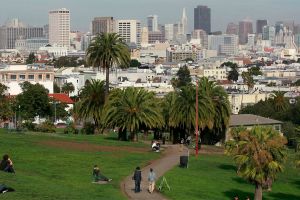This paper explores how city leaders can use economic power to narrow the gap in wealth and opportunity.
Introduction
Research shows that intergenerational mobility—the “American dream” shared by most countries—is stifled in places with high levels of inequality. The flip side is that places with the least inequality also experience higher and more sustainable levels of growth.
Key Findings
Cities are the world economy’s innovation hubs; with their dense concentrations of people, firms, talent, and other resources, they are the engines of economic growth and prosperity. Unfortunately, cities are also the home to severe economic inequality. As cities get larger, they tend to become more unequal; in all countries except for Canada, all metros with more than 500,000 people had levels of inequality well above the national average. Left unchecked, these growth patterns will deepen the global economic divide and could threaten the stability and vitality of both cities and nations.
Can cities resolve these apparent (and seemingly fundamental) tensions between growth and inclusion?
Beyond the moral imperative to address deepening poverty and inequality, there is an economic imperative. Urban inequality imposes reals costs on cities and societies. When cities fail to provide affordable and stable housing, employment opportunities, affordable and accessible transit to some of their residents, worklessness and poverty increase demand for costly social services. Public health can suffer, and violence imposes heavy costs on the public safety and health systems. Research shows that intergenerational mobility—the “American dream” shared by most countries—is stifled in places with high levels of inequality. The flip side is that places with the least inequality also experience higher and more sustainable levels of growth.
The great challenge and responsibility for city leaders is to find ways to use their economic power to 1) ensure that the conditions of their poorest residents continue to rise in real terms, and 2) narrow the gap in wealth and opportunity. We know that the most economically successful and competitive cities will find ways to mobilize and maximize all their assets and resources. Without intentional inclusive growth strategies, in most global cities, investments in the economy and gains from its growth have been unevenly distributed, both spatially and socioeconomically.


